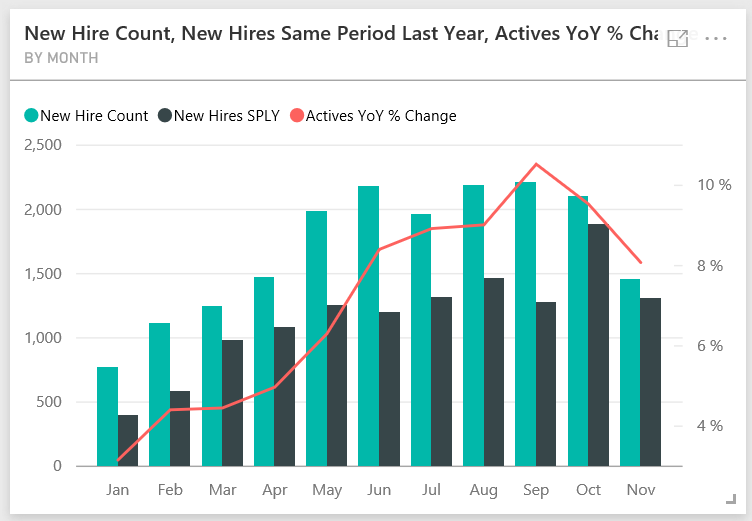
Secure remote working for human resources teams

Human resources (HR) teams have a major challenge on their hands this year. Transitioning quickly to a remote working model has been difficult for most. Without the structure of a physical workplace, employees can feel isolated and those feelings can build over time, creating a sense of alienation. Fortunately, the remote working technologies we discuss in this blog post help HR professionals empower their teams to connect, communicate, and collaborate securely.
The last in the Keep your business moving forward securely series, this post shares secure remote solutions and best practices for HR teams.
HR departments now, more than ever, need to protect the physical and mental wellbeing of employees. Employees need to feel connected to their leadership and each other. Clear and consistent communication will help, but it takes more than the occasional email or phone call to truly keep employees motivated.
Demonstrate you care about employees with clear, consistent communication, practical advice, and modern tools that inspire trust.
Security first!
Before we jump into the technologies, let’s start with a reminder to rely on cloud services and devices from a brand you can trust. With cybercrimes on the rise in Canada, every individual and organization should take steps to protect themselves from crimes like phishing. In addition to the practices we list in our previous post, make sure to look for Surface or Windows 10 devices, which come with built-in security technology.
Remember: Not every service or device your employees use will satisfy your security and privacy requirements, so make sure you give them the best!
Unite employees in one secure collaboration hub
Most Canadian HR professionals have used email, video conferencing, social media (especially LinkedIn), and other digital tools to recruit and onboard employees for years now. What has changed in recent years, however, is the rise of the secure employee collaboration hub. Unlike unsecure stand-alone solutions, Microsoft Teams works wonders on a cultural level across organizations, industries, and supply chains.
Microsoft 365, the integrated cloud platform, includes Microsoft Teams as well as the classic productivity apps—Word, Excel, PowerPoint—plus intelligent cloud services and world-class security.
So, what makes Teams so effective? For one, Microsoft Teams connects organizations to collaborate by enabling employees to see each other’s status. And, those employees have their choice of communication tools–chat, video and audio calls. That alone is welcome news to any organization still paying for video or audio conferencing!
Cut down on email
But that’s just the start. Teams encourages users to create dedicated channels for internal projects, groups, clients, and supply chain vendors. In a dedicated and secure channel, users can chat by text, share files easily, and even use fun emoticons and memes to personalize their communication. And users can always access past conversations, search through chats, and even retrieve links as needed.
Do townhall meetings
Companies can use Teams to conduct townhall events as well. These all-employee events give leadership teams the opportunity to connect, communicate, and recognize team and individual achievements. They can talk about business performance, cultural priorities, and even share some personal moments (like employee birthday or baby announcements) to help everyone feel united and on track.
Conducting a town hall on Teams is as easy as scheduling a calendar event and inviting everyone to the meeting. Team live events can host up to an audience of 10,000 people, which means most organizations can use it to talk to all their employees at once, no matter how dispersed. Speakers can deliver presentations, share videos, and field live comments in the chat window during the meeting. And they can record it all.
Record your calls
Anyone who misses a townhall meeting, or any video or call you choose to record in Teams, can watch it on demand post event via Stream. This Microsoft 365 enterprise video service automatically organizes all company videos in one place. Stream can also autogenerate captions for your videos to improve their accessibility.
Manage employees
You can manage all your employees (and your entire business) with Dynamics 365 Business Central. The small-business friendly version of Microsoft’s digital transformation platform gives organizations a suite of secure, cloud-based management applications powered by data and intelligence. Decision-makers use Business Central to digitize their operations (sales, customer support, finance, etc.) and get a complete, accurate, end-to-end view of their business.
Business Central gives HR teams an end-to-end view of employees, starting with more insightful employee records. HR can organize and analyze employees by experience, skills, education, training, and association membership, enabling more informed project resourcing recommendations.
HR teams also like how Business Central simplifies and streamlines routine but essential parts of the employee experience, such as payroll, reimbursing expenses, and tracking absences.
Better HR insights
HR teams who want to glean even more information about their human resources can explore Power BI. Microsoft’s business intelligence platform enables HR teams to access easy-to-use self-service reports and views across their talent pool. Like finance and operations professionals, HR professionals can make more informed decisions based on meaningful and reliable data visualizations.

[description] Screenshot of a Power BI illustrative graphic featuring a chart with columns and text that show a New Hire Count, New Hires Same Period Last Year, and Actives YoY % Change at the organization by month.
The HR sample content pack for Power BI contains a dashboard, report, and dataset for a human resources department that you can download.
Keep your business moving securely series
- How to work remotely, for everyone who needs to stay productive from home
- Eight remote working essentials to stay productive
- Your security checklist to help protect your employees working from home
- Empowering Canadian healthcare teams with new remote working tools
- Secure remote working solutions for government agencies
- Secure remote working for human resources teams




